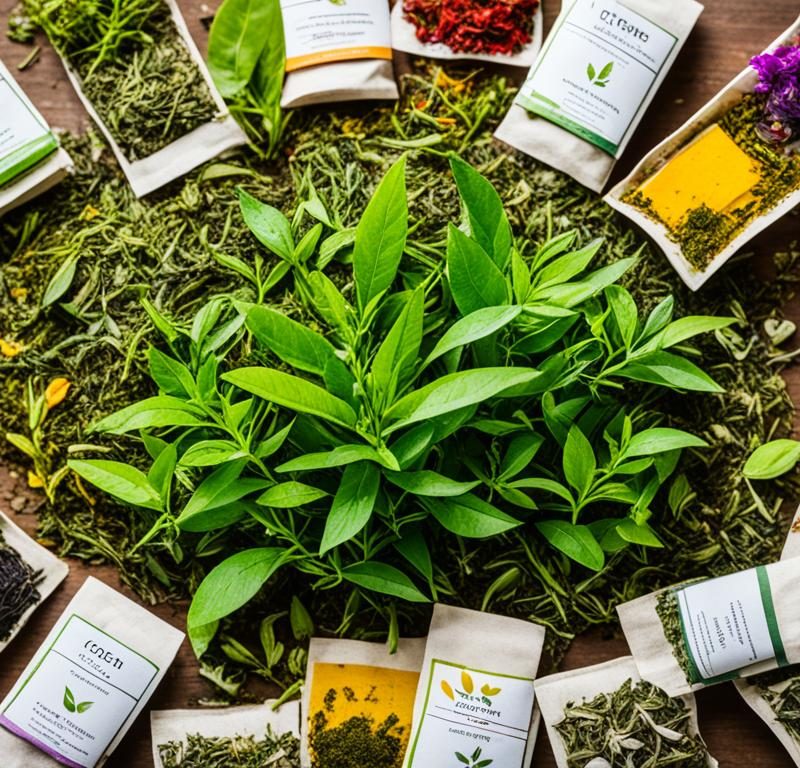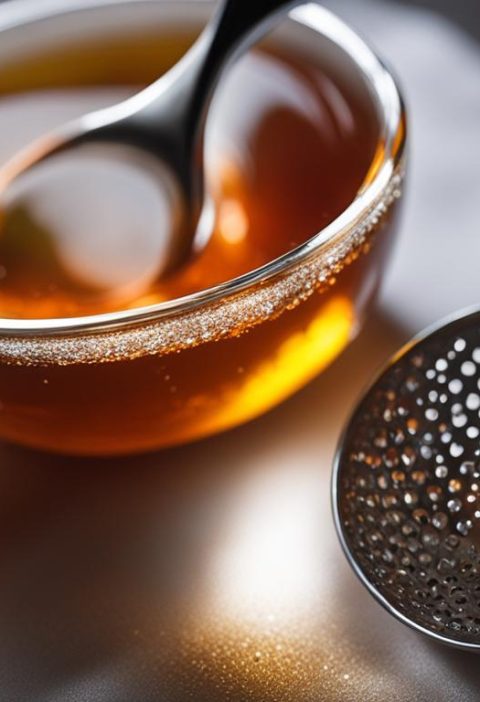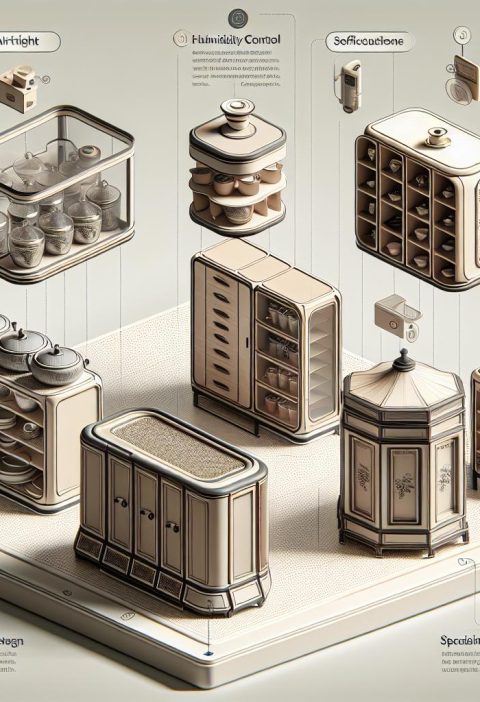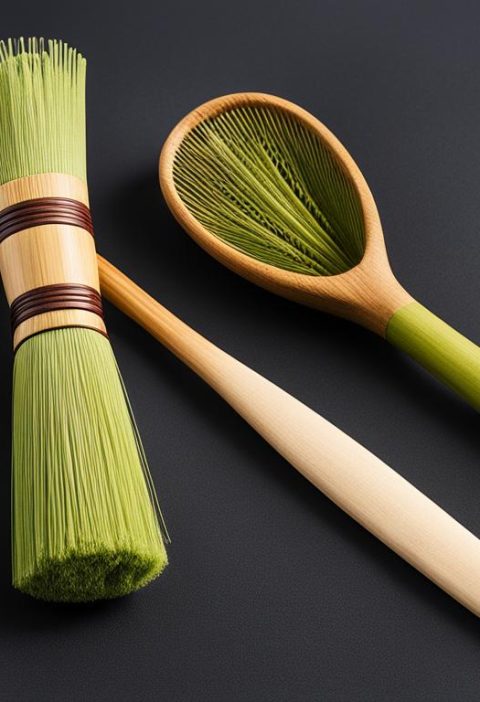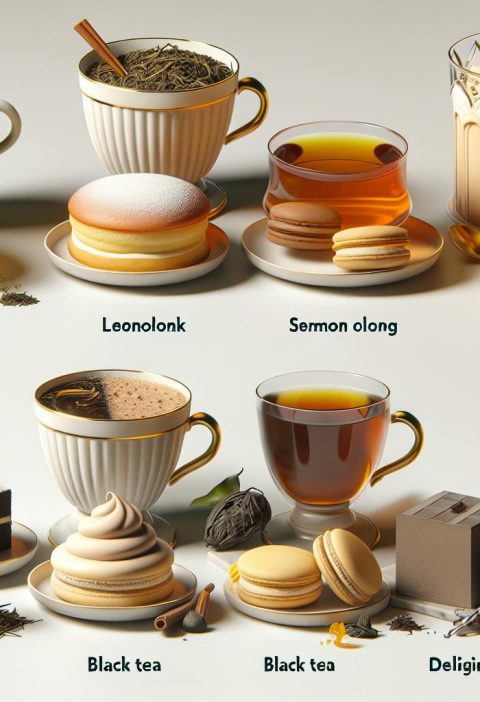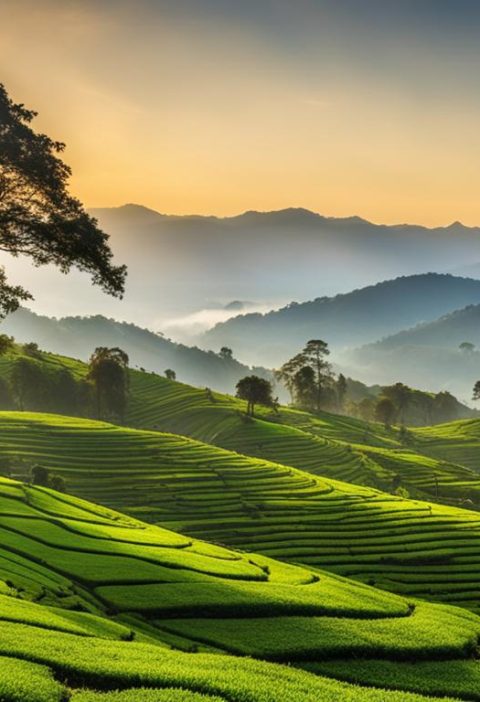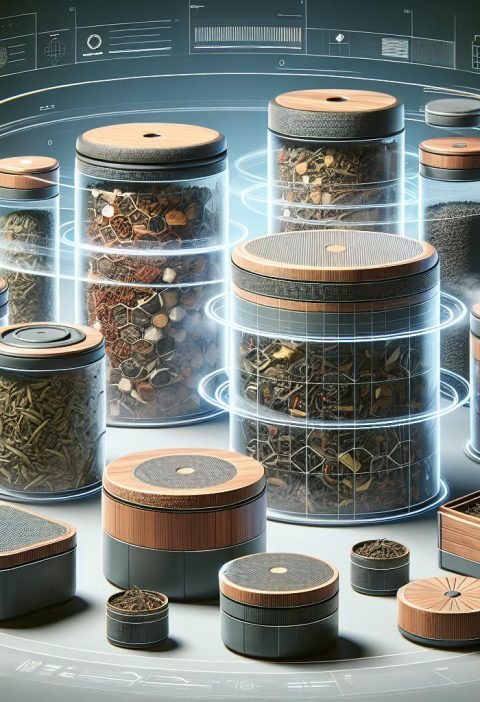Brewing a perfect cup of tea is an art form that requires knowledge, expertise, and a passion for the delicate flavors and aromas that tea has to offer. As a certified Tea Sommelier, I have spent years honing my skills and perfecting the art of loose leaf tea brewing. In this article, I will share with you my expert tips and techniques for brewing loose leaf tea that will elevate your tea-drinking experience to new heights. From selecting the right tea to mastering the brewing process, I will guide you through every step of the way.
Key Takeaways
- Using loose leaf tea enhances the flavor and aroma of your brew.
- Invest in an electric kettle with temperature settings for precise brewing.
- Avoid using tea balls as they restrict the leaves’ movement and flavor extraction.
- Filtered water ensures a clean and pure taste in your tea.
- Cold brewing tea is a great way to make refreshing iced tea.
- Pre-warming your teapot ensures a consistent temperature throughout the steeping process.
- Covering the teapot during steeping helps to retain heat and flavor.
- Steeping tea for longer does not make it stronger, it can result in bitterness.
- An electric milk frother can be used to create delicious tea lattes.
Why Loose Leaf Tea?
When it comes to tea, there’s something truly special about loose leaf. The advantages of loose leaf tea are numerous, making it a favorite among tea enthusiasts. Compared to tea bags, loose leaf tea offers a superior taste and flavor experience. This is because loose leaf tea contains whole tea leaves, allowing for a more robust and nuanced infusion.
In addition to its exceptional flavor, loose leaf tea also boasts a range of other benefits. One of the key advantages is its environmental friendliness. Unlike tea bags, which often contain plastic, loose leaf tea avoids unnecessary waste and reduces our impact on the environment.
But it’s not just about taste and sustainability—loose leaf tea also allows for personalization. With loose leaf tea, you have the freedom to adjust the flavor and strength of each cup according to your preferences. Whether you prefer a bold and intense brew or a delicate and subtle infusion, loose leaf tea caters to your taste.
Furthermore, brewing loose leaf tea offers an aesthetic and ritualistic dimension to the tea-drinking experience. The process of steeping whole tea leaves, watching them unfurl and release their flavors, can be a calming and meditative practice.
Types of Loose Leaf Tea
Loose leaf tea offers a wide variety of flavors and characteristics, making it a popular choice among tea enthusiasts. Let’s explore the different categories of loose leaf tea:
1. Black Tea
Black tea is the most well-known and widely consumed type of tea. It undergoes a full oxidation process, resulting in a rich and robust flavor. Some popular varieties include Earl Grey, Assam, and Darjeeling.
2. Green Tea
Green tea is known for its fresh and delicate taste. It undergoes minimal oxidation, preserving its natural color and flavor. Green tea offers a range of options, such as Sencha, Matcha, and Jasmine tea.
3. Oolong Tea
Oolong tea falls between black tea and green tea in terms of oxidation. It offers a diverse range of flavors, from floral and fruity to toasty and nutty. Notable oolong teas include Tie Guan Yin, Dong Ding, and Da Hong Pao.
4. White Tea
White tea is the least processed type of tea, made from young tea leaves and buds. It has a delicate and subtle flavor profile, often described as light and floral. Silver Needle and Bai Mu Dan are popular white tea varieties.
5. Yellow Tea
Yellow tea is a rare and prized variety, known for its mellow and slightly sweet taste. It undergoes a unique step called “yellowing” during processing, which gives it a distinct flavor. Huang Shan Mao Feng and Junshan Yinzhen are examples of yellow tea.
6. Dark Tea
Dark tea, also known as post-fermented tea or aged tea, undergoes a microbial fermentation process. It has an earthy and smooth flavor profile with a wide range of complexity. The famous Pu-erh tea is a type of dark tea.
It’s important to note that loose leaf tea comes from the Camellia sinensis plant, which is the source of all true teas. However, there are also herbal teas, known as tisanes, which do not contain camellia sinensis. Tisanes are made from various herbs, flowers, and fruits and offer a caffeine-free alternative for tea lovers.
Now that we’ve explored the different categories of loose leaf tea, let’s move on to the art of brewing the perfect cup.
How to Brew Loose Leaf Tea
Brewing loose leaf tea is an art that requires attention to detail and a few key steps. By following these guidelines, you can brew a perfect cup of tea every time. Here’s our step-by-step process for brewing loose leaf tea:
1. Water Selection
The quality of water used for brewing tea can greatly impact the taste of the final product. We recommend using filtered water to ensure a clean and pure flavor. Avoid using distilled or heavily chlorinated water, as they can alter the taste of the tea.
2. Water Temperature
The water temperature plays a crucial role in extracting the flavors and characteristics of different types of tea. Each type of tea has an ideal temperature for brewing. Here’s a general guideline:
- Black Tea: Water temperature should be around 200-212°F (93-100°C).
- Green Tea: Water temperature should be around 160-180°F (71-82°C).
- Oolong Tea: Water temperature should be around 190-200°F (88-93°C).
- White Tea: Water temperature should be around 160-180°F (71-82°C).
- Herbal Tea: Water temperature should be around 200-212°F (93-100°C).
3. Tea Brewing Devices
Investing in quality tea brewing devices can greatly enhance your tea brewing experience. While there are various devices available, a few popular options include:
- Tea Infusers: These small mesh or perforated balls allow the tea leaves to expand and infuse in hot water.
- Tea Presses: Similar to a French press, these devices press the tea leaves to the bottom, separating them from the brewed tea.
- Tea Pots: These traditional vessels with built-in filters allow for easy brewing and pouring.
4. Steeping Time
The steeping time refers to the duration for which the tea leaves are left to infuse in hot water. The steeping time can vary depending on the type of tea and personal preference. Here’s a general guideline:
| Tea Type | Steeping Time |
|---|---|
| Black Tea | 3-5 minutes |
| Green Tea | 2-3 minutes |
| Oolong Tea | 3-5 minutes |
| White Tea | 2-3 minutes |
| Herbal Tea | 5-7 minutes |
Please note that these are general guidelines, and the steeping time can be adjusted based on personal preference. For stronger tea, you can steep it for a longer duration.
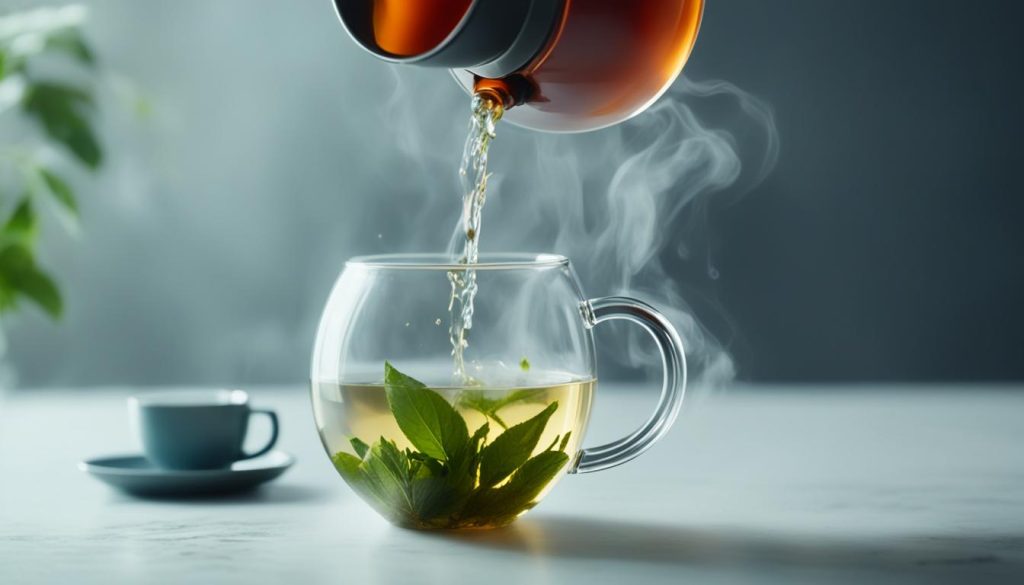
With these steps in mind, you’re ready to embark on a delightful journey of brewing loose leaf tea. Remember to experiment with different types of tea, water temperatures, and steeping times to discover your perfect cup of tea.
How to Store Loose Leaf Tea
Properly storing loose leaf tea is crucial for maintaining its freshness and preserving its flavor. Here are some essential tea storage tips to keep your tea at its best:
1. Choose the Right Container
To store loose leaf tea effectively, opt for airtight containers that keep air, light, and moisture out. Look for containers made of materials like ceramic, glass, or tin, which help maintain the tea’s quality by providing a dark and dry environment.
2. Keep Tea Away from Light
Light can degrade the quality of loose leaf tea over time. Ensure that the storage containers are opaque or kept in a cool, dark cupboard to protect the tea from exposure to sunlight.
3. Minimize Exposure to Humidity
Humidity can negatively affect the aroma and taste of loose leaf tea. It’s vital to store the tea away from sources of moisture, such as the kitchen sink or stove. Avoid storing tea near windows, as condensation can occur.
4. Store in Small Portions
Instead of storing all your loose leaf teas in a single container, consider dividing them into smaller portions. This prevents unnecessary exposure to air and helps maintain the tea’s freshness for longer periods.
5. Avoid Strong Odors
Loose leaf tea absorbs odors easily, so it’s essential to keep it away from strong-smelling substances. Store tea separately from spices, herbs, or other aromatic ingredients to preserve its natural flavors.
6. Label and Date Containers
To keep track of the tea’s freshness, it’s helpful to label and date your storage containers. This way, you’ll know when each batch was purchased or opened and can prioritize consuming the oldest teas first.
Following these tea storage tips will help protect your loose leaf tea from light, humidity, and other factors that can compromise its quality. By keeping your tea fresh and properly stored, you can ensure an exceptional tea-drinking experience with every brew.
| Storage Tip | Benefits |
|---|---|
| Choose the Right Container | Provides an airtight and light-blocking environment |
| Keep Tea Away from Light | Preserves the tea’s color, aroma, and flavor |
| Minimize Exposure to Humidity | Prevents the tea from absorbing moisture and losing its quality |
| Store in Small Portions | Reduces the tea’s exposure to air and maintains freshness |
| Avoid Strong Odors | Preserves the tea’s natural flavors and prevents flavor contamination |
| Label and Date Containers | Allows for easy tracking and consumption of oldest teas first |
Hot Tea, Iced Tea, and Tea Lattes
Beyond the traditional hot tea, there are various methods to enjoy tea. Whether you prefer a refreshing iced tea on a hot summer day or the creamy indulgence of a tea latte, tea offers versatile options to suit your taste preferences. Let’s explore some of these exciting variations:
1. Brewing Iced Tea
To make iced tea, you can simply pour hot tea over ice and add sweeteners or flavors to taste. This method allows for a quick and satisfying way to enjoy a chilled beverage. For a stronger and more concentrated flavor, you can double the amount of tea leaves used when brewing.
2. Cold Brew Tea
Cold brewing tea involves steeping tea leaves in cold water for an extended period, typically 6-12 hours. This gentle brewing method produces a smoother and less bitter flavor profile, making it perfect for iced tea enthusiasts. The longer steeping time allows for the extraction of the subtle flavors while minimizing the release of tannins.
3. Tea Lattes
Tea lattes combine the richness of milk with the aroma and flavor of tea, creating a creamy and comforting beverage. To make a tea latte, steep your favorite tea in hot water, then mix it with steamed or frothed milk. You can also add sweeteners or spices like cinnamon or nutmeg for an extra touch of indulgence. Tea lattes can be made with various types of tea, including black, green, or even herbal teas.
Aside from these popular variations, tea can be incorporated into other drinks and recipes to add unique flavors. Here are a few more ideas:
- Blend tea with coffee for a delicious fusion of flavors.
- Infuse tea into liquor to create tea-infused cocktails and beverages.
- Use tea in cooking to enhance the flavor of soups, stews, and marinades.
As you can see, there is a world of possibilities when it comes to enjoying the versatility of tea. From hot brews to cold brews, from lattes to infused drinks, and even using tea as an ingredient in cooking, let your creativity flow and savor the endless array of tea experiences.
Coffee Infused with Tea
Looking for a unique and flavorful beverage experience? Consider infusing tea into your coffee for a delightful twist on your morning cup. By blending coffee and tea together, you can create a harmonious combination of flavors that will awaken your taste buds.
There are a few ways to enjoy coffee infused with tea. One option is to add tea blends to the coffee brewing process. Simply place your favorite loose leaf tea or tea bags in the coffee filter along with your coffee grounds. As the coffee brews, it will extract the flavors from the tea, resulting in a rich and aromatic cup of coffee infused with the unique characteristics of the tea blend.
Another method is to blend coffee grounds with tea leaves. Mix equal parts of ground coffee and loose leaf tea of your choice, and then brew it as you would a regular pot of coffee. This method allows the coffee and tea to meld together, creating a well-balanced fusion of flavors. Whether you prefer a bold and robust coffee with a hint of tea or a more delicate and floral combination, the possibilities are endless.
Experimentation is key when it comes to blending coffee and tea. Explore different combinations of coffee and tea to find your preferred taste. You may discover unexpected flavor profiles and find a new favorite brew that perfectly suits your palate.
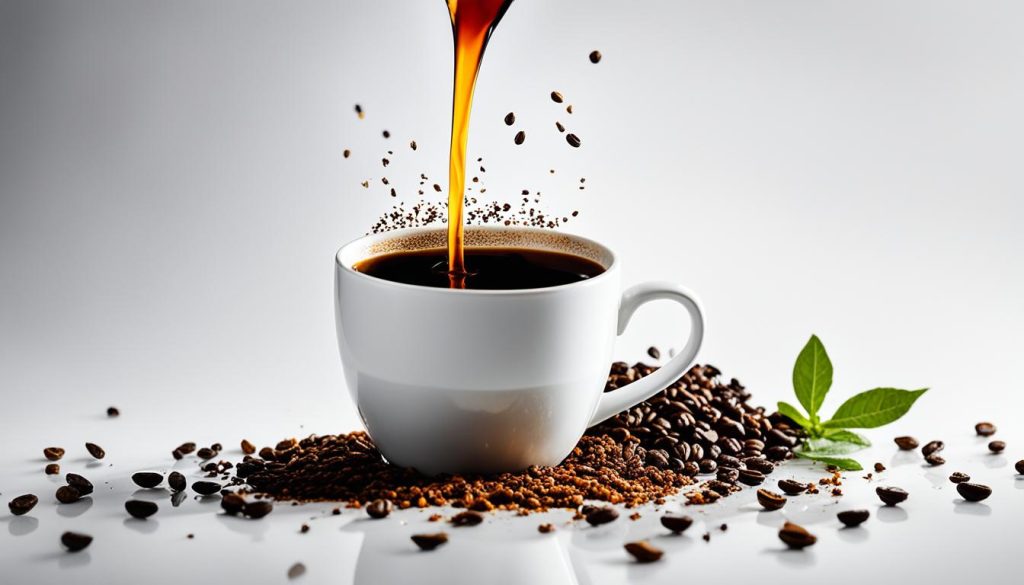
Create your own unique coffee and tea blends, and enjoy a truly customized beverage experience.
Benefits of Coffee Infused with Tea
Blending coffee and tea offers a range of benefits. Firstly, it allows you to enjoy the distinct flavors of both beverages in one cup. The rich and bold notes of coffee complement the nuanced and delicate flavors of tea, resulting in a well-rounded and satisfying taste.
In addition to the flavor combination, coffee infused with tea can provide an extra boost of energy. While tea naturally contains some caffeine, combining it with coffee adds an extra kick to your morning routine. The caffeine content will vary depending on the type and ratio of coffee and tea used, allowing you to customize the intensity of your beverage.
Furthermore, blending coffee and tea can be a fun and creative way to explore different flavor profiles. By experimenting with various coffee and tea combinations, you can broaden your palate and discover new taste sensations. It’s a playful and adventurous approach to enjoying your daily cup of joe.
Try These Coffee and Tea Combinations
Ready to embark on your coffee and tea blending journey? Here are a few enticing combinations to get you started:
| Coffee | Tea |
|---|---|
| Dark roast | Earl Grey |
| Medium roast | Jasmine green tea |
| Light roast | Chamomile |
| French press | Matcha |
| Espresso | Rooibos |
Feel free to experiment with different coffee blends, such as dark, medium, or light roasts, and pair them with various teas, including black, green, herbal, and matcha. The key is to find a combination that complements both the coffee and tea flavors, creating a harmonious and satisfying beverage.
So why not take your coffee experience to the next level? Blend your favorite coffee with tea and embark on a delightful exploration of flavors. Coffee infused with tea is a wonderful way to enjoy the best of both worlds and elevate your daily caffeine fix.
Infusing Tea into Liquor
One exciting way to elevate your cocktail game is by infusing tea into liquor. By steeping tea in spirits such as vodka or gin, you can create unique and flavorful tea-infused cocktails. The infusion process allows the flavors of the tea to blend harmoniously with the alcohol, resulting in delightful and refreshing beverages.
To make tea-infused liquor, start by selecting your favorite loose leaf tea. Consider the flavor profile you want to achieve, whether it’s floral, fruity, or herbal. Experiment with different tea varieties such as Earl Grey, jasmine, chamomile, or hibiscus to add a special twist to your cocktails.
Here’s a simple step-by-step guide to infusing tea into liquor:
- Choose a high-quality loose leaf tea.
- Measure out the desired amount of tea based on your preference and the intensity of flavor you desire.
- Place the tea in a glass jar or bottle.
- Pour the chosen liquor over the tea, ensuring that the tea is fully submerged.
- Seal the jar or bottle tightly and let it sit for a designated period of time, allowing the flavors to infuse. The steeping time can vary depending on the tea and liquor combination, typically ranging from a few hours to several days.
- Once the desired infusion is achieved, strain the liquid to remove the tea leaves.
- Your homemade tea-infused liquor is now ready to be used in cocktails or enjoyed on its own.
Not only does tea-infused liquor add depth and complexity to cocktails, but it also adds an elegant touch to your drink presentation. Impress your guests with unique tea-infused cocktail creations that showcase your creativity and appreciation for the art of mixology.
Image:
Cooking with Tea
Tea isn’t just for sipping—it can also add a unique and flavorful twist to your culinary creations. Whether you’re a seasoned chef or a beginner in the kitchen, incorporating tea into your recipes can elevate the taste and presentation of your dishes. From adding tea to soups and stews to flavoring rice and marinating meats, the possibilities are endless.
By using tea in your cooking, you can infuse dishes with subtle and aromatic flavors that will surprise and delight your taste buds. The natural herbs, spices, and botanicals in tea can enhance the overall taste profile of your dishes, adding depth and complexity.
- Adding tea to soups and stews: By steeping tea bags or loose leaf tea in the broth, you can impart unique flavors and create a memorable dining experience. Experiment with different types of tea, such as green tea for a light and refreshing taste or black tea for a bold and robust flavor.
- Flavoring rice with tea: Infusing rice with tea can transform a simple side dish into something extraordinary. Prepare your rice as usual, but substitute part of the cooking liquid with brewed tea. The result is a subtly flavored rice that pairs perfectly with a variety of main dishes.
- Marinating with tea: Tea can act as a tenderizer and flavor enhancer when used as a marinade for meats, poultry, or tofu. Create a marinade by combining brewed tea, soy sauce, honey, and your favorite herbs and spices. Allow the protein to marinate for a few hours or overnight before cooking for maximum flavor infusion.
Whether you’re cooking a comforting meal for yourself or impressing guests with a gourmet creation, incorporating tea into your recipes adds a touch of elegance and sophistication. Let your creativity guide you in the kitchen and explore the vast possibilities of cooking with tea.
Tea Recipe Inspiration
Looking for some inspiration to get started? Here are a few tea-infused recipes to try:
- Earl Grey Tea-Infused Chocolate Mousse: Combine the rich flavor of dark chocolate with the delicate floral notes of Earl Grey tea to create a decadent dessert.
- Green Tea Matcha Smoothie Bowl: Blend antioxidant-rich matcha green tea powder with your favorite fruits and a splash of almond milk for a vibrant and nutritious breakfast.
- Chai-Spiced Tea Loaf: Infuse a classic loaf cake with the warm and aromatic flavors of chai tea, cinnamon, ginger, and cardamom for a cozy and comforting treat.
Get creative in the kitchen and experiment with different tea varieties and recipes. Cooking with tea opens up a world of possibilities and allows you to enjoy the unique flavors and aromas that tea has to offer.
The Health Benefits of Tea
Tea is not just a delicious and comforting beverage, but it also offers a wide range of health benefits. Thanks to its abundance of antioxidants, tea can have a positive impact on various aspects of our well-being.
1. Promotes Overall Wellness
Drinking tea regularly can contribute to overall wellness. The antioxidants present in tea help protect our cells from damage, reducing the risk of chronic diseases such as heart disease, cancer, and diabetes. Additionally, tea contains various vitamins and minerals that support a healthy immune system.
2. Aids in Relaxation
Tea has long been associated with relaxation and stress reduction. The act of brewing and sipping a warm cup of tea can have a calming effect, promoting a sense of tranquility and well-being. Certain herbal teas, such as chamomile and lavender, are particularly known for their soothing properties.
3. Improves Mental Focus
Tea contains natural compounds, such as caffeine and the amino acid L-theanine, that can improve mental focus and concentration. These substances work together to provide a balanced boost of energy and alertness without the jitters or crashes often associated with coffee or energy drinks.
4. Supports Digestion
Tea can also aid in digestion and promote a healthy digestive system. Some teas, such as peppermint and ginger, have been traditionally used to alleviate digestive discomfort, reduce bloating, and soothe an upset stomach. They can help improve digestion and promote a feeling of well-being after a meal.
5. Packed with Antioxidants
One of the key health benefits of tea is its high antioxidant content. Antioxidants are compounds that help protect our cells from damage caused by free radicals, which are unstable molecules that can lead to inflammation and various health issues. Tea, especially green tea, is rich in polyphenols, which are powerful antioxidants that can support overall health.
With its numerous health benefits, incorporating tea into your daily routine is a simple way to enhance your well-being and promote a healthy lifestyle.
Exploring Tea Varieties and Beyond
Tea is a versatile beverage that invites us to embark on a journey of tea exploration and flavor discovery. With countless flavors and varieties to choose from, there is a world of tea waiting to be discovered and enjoyed. Whether you are a seasoned tea enthusiast or new to the tea scene, the possibilities for expanding your tea palate are endless.
One way to embark on a tea adventure is by trying different tea blends that combine traditional flavors with innovative ingredients. From floral-infused green teas to exotic fruit teas, these unique combinations offer a delightful twist on classic favorites. Don’t be afraid to step out of your comfort zone and explore new flavor profiles that excite your taste buds.
Expanding your tea palate goes beyond just trying different tea flavors. It also involves embracing creative ways to enjoy tea. Experiment with alternative brewing methods like using a stovetop teapot, infusers, or even a French press to enhance the aroma and taste of your tea. You can also explore the world of tea-infused cocktails, where tea becomes a captivating ingredient that adds depth and complexity to your favorite mixed drinks.
So, let your curiosity guide you on a tea-tasting adventure. Explore the vast array of tea varieties, from delicate white teas to robust black teas, and everything in between. The journey of tea exploration is not only about discovering new blends, but also about discovering your personal preferences and expanding your tea knowledge. So go ahead, try new tea flavors, and savor the rich aromas, flavors, and traditions that tea has to offer.
